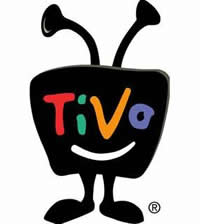 Nielsen, the top American agency that measures TV viewing audiences, is going to provide ratings that take account of time-shifted viewing through digital recording devices like TiVos even though viewers are able to, and in my experience, generally do, fast-forward through the paid for messages.
Nielsen, the top American agency that measures TV viewing audiences, is going to provide ratings that take account of time-shifted viewing through digital recording devices like TiVos even though viewers are able to, and in my experience, generally do, fast-forward through the paid for messages.
And as usual, with research funded by those that benefit, it could be worth taking several pinches of salt with this study. Some of the phraseology has strong hints of bamboozlement; the underlying message from a study conducted for the US TV networks, is that homes with PVRs and equivalents watch more commercials. Much the same came out from Sky after they introduced their Sky+ PVR.
 The US networks say that time-shifted ratings should be taken into account, and point out that PVR users watch more TV – which we don’t dispute. They watch around 5.7 hours and that’s more than 10% extra when compared with the technologically-disadvantaged standard household. Their logic follows that this extra 10% of viewing, gives them more opportunity to see commercials. With PVR penetration in the USA already around 8% of the TV universe and expected to rise steadily over the coming years, this adds up to a is significant amount for media buyers.
The US networks say that time-shifted ratings should be taken into account, and point out that PVR users watch more TV – which we don’t dispute. They watch around 5.7 hours and that’s more than 10% extra when compared with the technologically-disadvantaged standard household. Their logic follows that this extra 10% of viewing, gives them more opportunity to see commercials. With PVR penetration in the USA already around 8% of the TV universe and expected to rise steadily over the coming years, this adds up to a is significant amount for media buyers.
As one would expect, media buyers remain sceptical and many have said that they will ignore the new time delay viewers.
TV is now being consumed in a variety of ways. With Apple having sold more than one million download viewings of ABC programmes, expect further challenges for the agencies, as media companies seek to measure the viewing of commercials from mobile devices, Internet and other on-demand screenings.